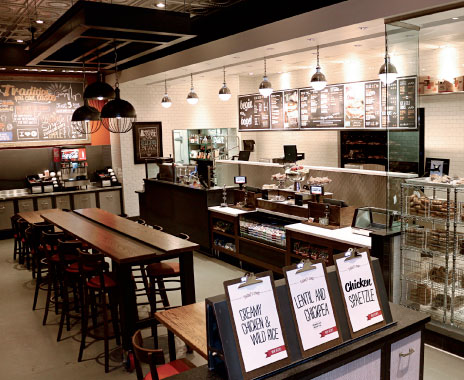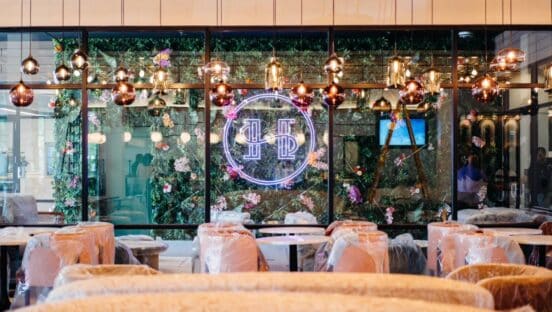A new trend in seating design among fast-casual restaurants is creating a more relational meal experience for diners. Brands are starting to follow in the footsteps of full-serve restaurants that feature communal tables where customers can enjoy meals alongside others they may not know.
“In fast casual, these tables make a lot of sense, because there is more of a quicker in-and-out kind of crowd that is more willing to interact with others,” says Tanya Spaulding, a principal at Shea Design in Minneapolis. “People are getting a better comfort level sitting near strangers in U.S. culture.”
Adam Baker, president of Colorado-based Larkburger, says shared eating tables make sense for his restaurants because the concept has a neighborhood-friendly atmosphere. Larkburger recently opened its 13th location, in Centennial, Colorado, and installed an 18-seat table that includes a power strip to charge devices such as laptops and smartphones.
“We consider ourselves a community restaurant,” he says. “The table is a great place to sit and get to know the people around you.”
This past January, Bruegger’s opened a location in Woodbury, Minnesota, that features a community table that accommodates up to 12 guests.
“It creates a more flexible seating area. Customers love it,” says Judy Kadylak, director of marketing at Bruegger’s Bagels. She says the new design will be the prototype for future bakery openings and will also be the basis of renovations in existing units.
Spaulding says community tables work well for quick serves that tend to have a variety of small-plate menu items, such as sandwiches, sushi, and other finger foods. As the trend is relatively new, this design tends to succeed more in restaurants that embrace change and innovation.
“They work best with the brands that are a little more energetic,” Spaulding says.




